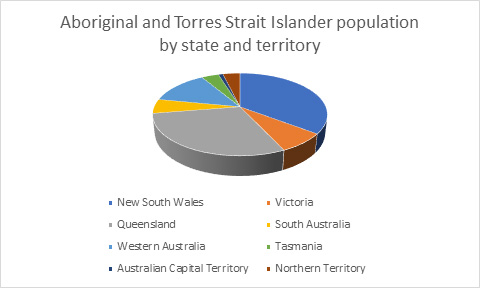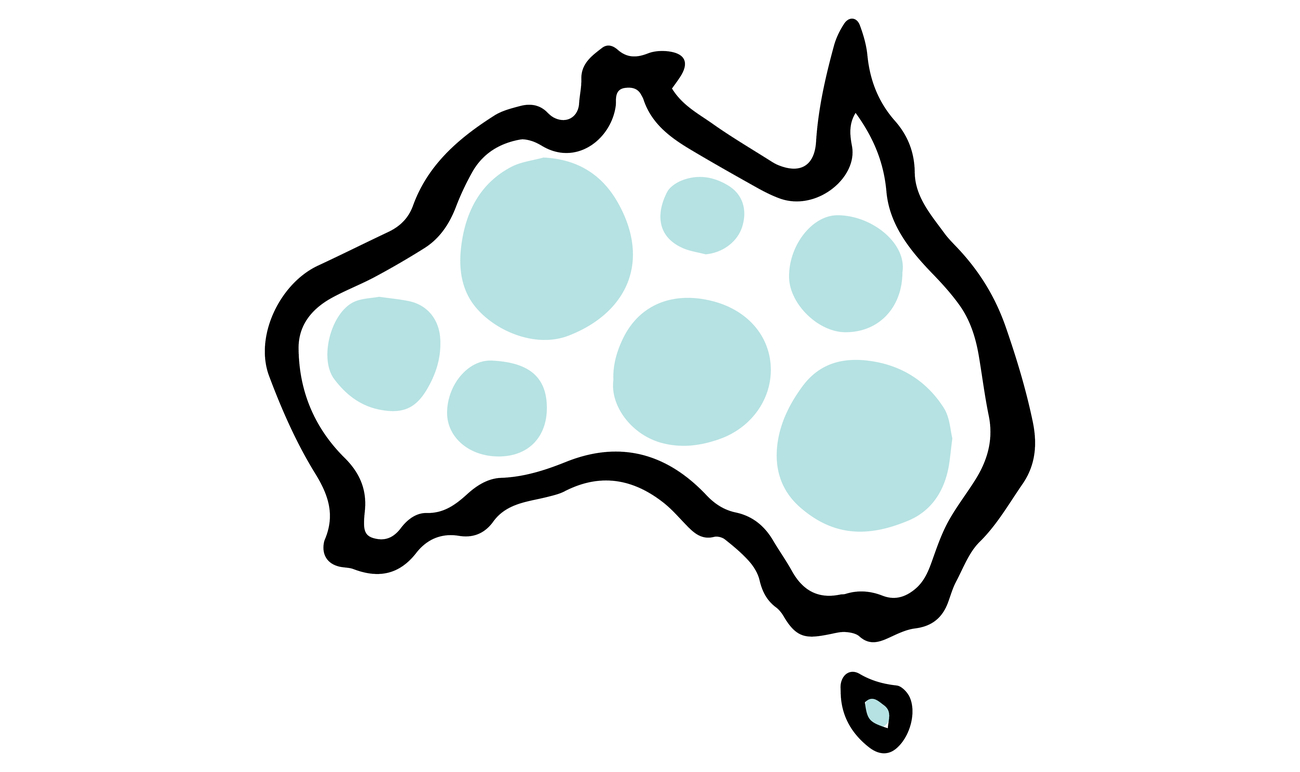Australia is made up of many different and distinct Aboriginal and Torres Strait Islander groups, each with their own culture, language, beliefs and practices.
Aboriginal and Torres Strait Islander peoples are the first peoples of Australia, meaning they were here for thousands of years prior to colonisation.
There are varying estimates for how long Aboriginal and Torres Strait Islander peoples have lived on this continent, however, upwards of 60,000 years is what current research reveals.
The Torres Strait region is located between the tip of Cape York and Papua New Guinea and is made up of over two hundred islands. Seventeen of these islands are inhabited. There are also two Torres Strait Islander communities, Bamaga and Seisia, on the northern peninsula area of mainland of Australia. The Torres Strait is also home to the Aboriginal Kaurareg Nation who are the traditional inhabitants of Muralag (Prince of Wales Island), Kirriri (Hammond Island), Ngurupai (Horn Island) and Waiben (Thursday Island).
In the Torres Strait, people may refer to a cluster or group of islands to define different sections of the Torres Strait region. These include Top Western, Western Islands, Central Islands and so on.
Aboriginal peoples come from all areas of mainland Australia, including Tasmania and other islands.
John Paul Janke, Wuthathi (Eastern Cape York) and Meriam (Murray Island, Torres Strait) man, talks about his Aboriginal and Torres Strait Islander heritage.
Who are Aboriginal and Torres Strait Islander peoples?
In 2016, Aboriginal and Torres Strait Islander peoples made up just 3.3 per cent of the Australian population. Of that group, the majority were under the age of twenty five.
Aboriginal and Torres Strait Islander peoples live in urban, regional and remote areas and are present in all communities, not necessarily on their traditional lands or islands.
Since colonisation, there have been sixty-seven definitions of Aboriginality (Australian Law Reform Commission). In the past, definitions were based on racialised categories called blood quantums or ‘degrees of Aboriginal blood’; classifications that were and remain highly offensive.
Like all people, Aboriginal and Torres Strait Islander peoples don’t all look the same whether it be skin colour, hair, nose, or height.
The current definition, proposed by the Commonwealth Department of Aboriginal Affairs in the 1980s, is that an Aboriginal and/or Torres Strait Islander person is:
- of Aboriginal and/or Torres Strait Islander descent;
- identifies as an Aboriginal or Torres Strait Islander; and
- is accepted as such by the community in which he or she lives or has lived.
It’s important to remember that this definition is very broad and is often reserved for specific situations such as applying for Indigenous-specific services or programs. Each community has their own means of community identification.
What term is best to use?
‘Indigenous Australian’ is a very general term that covers two very distinct cultural groups: Aboriginal and Torres Strait Islander peoples. These terms of grouping are umbrella terms, within which sits a large array of different nations, each with their own culture, language, beliefs and practices. It’s important to acknowledge that there is great diversity within these two broad terms.
Many Aboriginal and Torres Strait Islander people do not like to be referred to as ‘Indigenous’ because it is considered too generic and can be applied to all indigenous peoples of the world. There is a growing preference for First Nations Australians as a more encompassing term, because while it also is generic, it acknowledges the diversity of Aboriginal and Torres Strait Islander peoples. There are of course many other terms that Aboriginal and Torres Strait Islander peoples might use when referring to themselves collectively, for example First Australians or Sovereign peoples.
‘Indigenous Australian’ should only ever be used when speaking about Aboriginal AND Torres Strait Islander people.
Each person has their own specific clans, groups, communities, islands and/or nations that they identify with. Ways of identifying are personal and individual; it’s always best to ask people what they prefer and to recognise that this may be their preference but may not be the case for other First Nations Australians.
Aboriginal peoples
Aboriginal peoples may choose to identify with their language groups and traditional country, for example, Gunditjamara people are the traditional custodians of western Victoria, the Gadigal people of the Eora nation are from Sydney, and the Yawuru people are the traditional custodians of Broome in Western Australia.
Aboriginal peoples might describe themselves in ways that relate to their Country (including their waters), such as ‘saltwater people’ for those who live on the coast or on islands, or ‘freshwater’, ‘rainforest’, ‘desert’ or ‘spinifex’ for people who live in that ecological environment, to name a few.
Some Aboriginal people prefer to be referred to by their regional identity, such as Koori, Murri, Nunga or others. These names ‘place’ them as coming from specific geographical regions, similar to saying you’re a ‘Queenslander’ or ‘Tasmanian’. These regional identities do not necessarily adhere to Australia’s state or territory boundaries.
Torres Strait Islander peoples
Torres Strait Islanders generally define themselves as being from specific islands, tribes, family groups and/or sea country. In the Torres Strait, you may live in one community but have historical ties across multiple different islands.
Torres Strait Islanders may also refer to themselves as Zenadth Kes. This term was created by the late Mr Ephraim Bani, a Torres Strait Elder and linguist who sought to redefine the European name for the region (the Torres Strait) which was named after the Spanish navigator Luis Vaez de Torres who sailed through the area in 1606. The term ‘Zenadth Kes’ is an amalgamation of Torres Strait language names for the four winds that pass through the region.
It's important to remember too that regardless of where Aboriginal and Torres Strait Islander peoples live, their identity remains connected to their cultural and ancestral homelands. For example, you might identify as a Ngunnawal person (the First Peoples of the Canberra region) but live in Brisbane.
Language use
Language will always change and evolve, so what once may have been used, is today offensive. ‘Aborigine’ is one such word, and should not be used.
When used in Australia, it’s preferable to capitalise the words ‘Indigenous’, ‘Aboriginal’ and ‘Torres Strait Islander’, just like you would with any group of people, and avoid using acronyms like ATSI or TSI. If you’re referring to indigenous peoples generally around the world then ‘indigenous’ is spelt in lowercase.
Language that homogenises or erases diversity should also be avoided, for example, referring to all Torres Strait Islanders as ‘Thursday Islanders’, or calling all Aboriginal peoples ‘Kooris’.
It’s also preferable to use plurals when speaking about Aboriginal and/or Torres Strait Islander peoples. It acknowledges the diversity of the different groups and is inclusive of all the different peoples.

